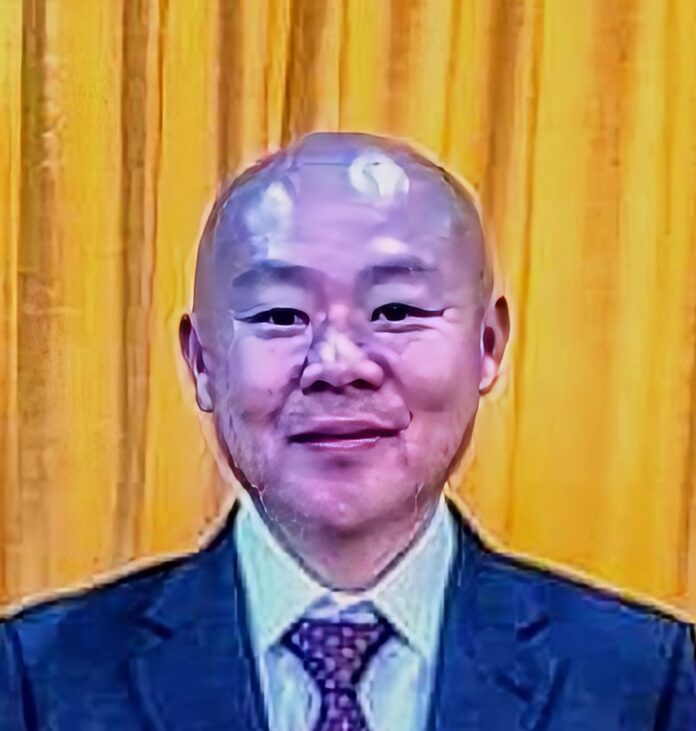By Datuk Philip Golingai

Why have the calls for justice for Zara Qairina Mahathir gathered so much momentum?
The case of the 13-year-old girl who died on July 17, a day after falling from the third floor of her school dormitory in Papar, Sabah, is tragic indeed and the loss to her family is incalculable.
But there have been other sad cases like this before that didn’t gain the sort of attention Zara Qairina’s has.
#Justice4Zara has gone viral online while physical gatherings of hundreds of people have been taking place in towns in Sabah too.
The case first came to the public’s attention when her family called for further investigation into her death, citing evidence of bullying and what they felt was official inaction.
Initially, the case was considered a sudden death from a fall, and a postmortem was not performed.
Zara Qairina’s mother, Noraidah Lamat, together with a doctor, a pathologist, and the investigating officer, co-signed a form issued by the hospital consenting to forego a postmortem.
Noraidah later explained in a Facebook posting that she was in shock and not thinking clearly when asked to consent to a postmortem immediately after Zara Qairina’s death.
The 45-year-old said there had been no clear explanation of the procedure given at the time.
“There was no clear explanation, and we are not familiar with this kind of case. We panicked, and no advice was given about the postmortem process,” she said.
“If we had known, we would not have signed the form refusing the postmortem.”
Later, when she was thinking more clearly, Noraidah recalled the unusual bruises she had seen on her daughter’s body.
She also had an unsettling phone recording of Zara discussing being bullied.
Fuelled by her suspicions, she relentlessly pursued the case, filing police reports and demanding a full investigation – the case gained national attention primarily due to her persistent actions.
And that attention continued even after an investigation was opened – why the interest?
I believe it’s because Zara Qairina’s death has become a symbol of much larger issues: institutional failure and injustice.
What began as a personal tragedy for one family has resonated deeply with the public due to several troubling factors surrounding the girl’s tragic death.
× Allegations of bullying and abuse: “The public can relate to this case as they have heard of such cases happening to their family members in schools,” a Sabah politician told me.
“The public also believe that the Education Ministry is not doing enough to tackle bullying in schools. The Education Minister was also seen as more concerned [with other matters] than Zara Qairina’s death.”
× Initial lack of a postmortem. The fact that an autopsy was not conducted immediately after the teen’s death raised public suspicion of a VVIP cover-up. The failure of the police to carry out a transparent probe feeds into the narrative that “hidden hands” were involved in closing the case quickly.
“The public also has a trust deficit with the police. They have a negative impression of the police’s handling of numerous high-profile cases,” the politician said.
× Fake news surrounding #Justice4Zara adding fuel. Arguably, speculation on social media that a VVIP’s grandchild was involved in the case made it go viral. The connection with Sabah Yang di-Pertua Negeri Tun Musa Aman was a juicy piece of fake news that some members of the public believed without verification.
It is baseless, as explained by Musa’s son-in-law, Datuk Dr Mohd Arifin Mohd Arif, who is the state Science, Technology and Innovation Minister and Membakut assemblyman. The rumour was that a student named “Farisha” was involved in the incident; however, Arifin said he does not have a child of that name and none of his children attends the school where the death occurred.
Other politicians from various parties, such as GRS, PKR, and Parti Warisan, were also named in numerous fake news reports.
Domestic Trade and Cost of Living Minister and Papar MP Datuk Armizan Ali denied he had any children studying at the school.
Deputy Higher Education Minister and Sabah PKR chief Datuk Mustapha Sakmud was dragged into the mess by people who wrongly said he’s the VVIP protecting individuals involved in Zara Qairina’s death.
Warisan’s Darau assemblyman Azhar Matussin lodged a police report against social media claims linking his daughter to the case. “I do not have a daughter named Dayana Balqis, also known as Dedeng. Furthermore, I have never sent my daughter to study at SMKA Tun Datu Mustapha,” he posted on Facebook.
“The birth certificate displayed in the post does not belong to my daughter. All the details are false. They were fabricated and this can be verified at any National Registration Department branch.”
The other fake news added into the spin cycle is that the victim was put into a washing machine. When I saw this claim on social media I thought whoever posted it must either be crazy or truly believed it. The police have confirmed it is fake news, and a woman was detained for posting the claim.
The juicy fake news will continue. And regardless of denials and even police statements, some will still believe the claims.
The politician with whom I was chatting pointed out that former prime minister Datuk Seri Najib Razak has long been linked to the murders of Mongolian national Altantuya Shaariibuu in 2006, financial analyst Hussain Najadi in 2013, and deputy public prosecutor Kevin Morais in 2015. “The stories are not true and yet many out there believe that Najib was involved,” he said.
“No amount of facts you present to them will convince them that Najib had nothing to do with these deaths.”
Right now, the public is hungry for blood. They need someone or something to blame for Zara Qairina’s death.
In the meantime, #Justice4Zara has turned political. Politicians have hijacked the advocacy movement either to get into power or remain in power at the federal and state levels.
And in doing so, they are doing a terrible injustice to Zara Qairina.
Editor: This article has appeared in thestar.com.my



